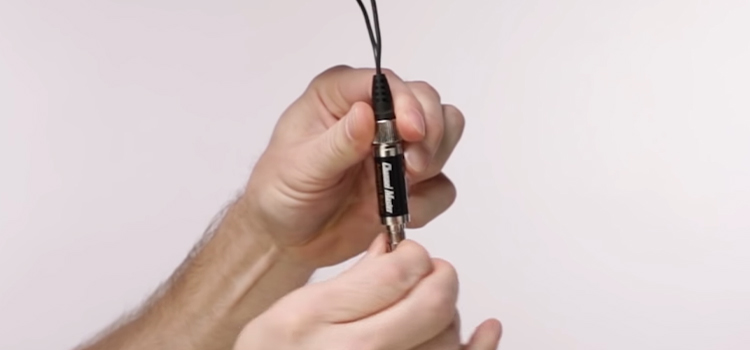How to Make A 75 To 300 Ohm Matching Transformer? | A Step by Step Guide for You
By wrapping some wires around a toroidal core, you can make a 75 to 300 Ohm matching transformer. It will cost you no more than $5. It will cost you nothing if you can find a few copper wires and a core in your house.
The amount of time it takes is determined by your level of skill. It may take some time to follow the procedures correctly if you are trying out a project like this for the first time. If you’re a pro, it won’t take you more than 30 minutes.

Steps for Making a 75 To 300 Ohm Matching Transformer
Making a 75 to 300 Ohm matching transformer sounds hard, but is really easy if you follow these steps below.
Step 1: Wrapping the Core
Wrap the copper wires around the toroidal core in the manner indicated below. You’ll need two pairs of wires. To begin, thread the top coil through the ring. Depending on the size of the core, wrap it around it 2-3 times. To keep the coil in place, put your thumb on the bottom end.
Now, remove the coil from the core once it has been wrapped. Take another wire from the same pair and wrap it around the coil in the same manner, but on the opposite side. Take another pair of wires and do the same thing on the opposite side of the wire.
Step 2: Ready the Starting Points
You should now have four wire ends exiting from both sides of the core. Remove the copper wires’ outer rubber covering (if any) from the top and bottom sections. Take the two center ends from the four ends and link them on the outside side of the wire, the side that has come out after wrapping.
Both ends must come from separate pairings. Make sure they’re properly wrapped around each other. That’s the starting point (GND).
Step 3: Finishing Up
Leave the two ends of the corner alone. They’re the input ends with a 300-ohm resistance. Take one pair of wires and wrap them around the opposite side. That’s the 75-ohm output end of the circuit. Carry on with the other end of the wire in the same manner. This will be the basis for the output. It makes no difference which one you choose for the ground.
You have the option of leaving the link GND alone or connecting it to the output ground. You should now have two 300 Ohm inputs on the outside, with an input GND end in the middle. On the other hand, you have a 75-ohm output end and a GND output. The matching transformer for 75 to 300 ohms is now ready.
Tools You will Need to Make A 75 To 300 Ohm Matching Transformer
You won’t need any complicated equipment. You will be needing a plier if you want to cut the wires. In terms of materials, you’ll simply need copper wires with a diameter of 0.3-0.5 mm and a toroidal core with an outside diameter of 8-15 mm.
You can choose double-hole pig-nose cores instead of toroidal cores because they are specifically developed for radios.
Why is a 75 to 300 Ohm Matching Transformer Needed
Impedance matching transformers have a wide range of applications and are commonly employed in modern communication systems. The device’s main purpose is to make other gadgets compatible with one another.
Radio and Television
Antennas and coaxial wires are connected using matching transformers. A balun must be connected between the antenna and the coaxial cable in order to measure the antenna’s impedance. Otherwise, the equipment will accidentally release radiation, distorting the measurement.
Audio and Video
Baluns, which convert high balanced impulses to lower unbalanced signals, are now employed in many security cameras. Matching transformers are used in audio systems to assist remove outside noise from the mix. It increases the amount of noise produced by the system and infiltrates it.
Frequently Asked Questions
Why is coax 75 Ohm?
75 Ohm cables are commonly used for AV transmissions, and they can transfer signals up to 50 feet with any installation. High-definition television transmissions, satellite and cable boxes, and police scanners are all popular uses for this wire.
Conclusion
This 75 to 300 Ohm matching transformer is a small circuit, and the gadget will be damaged if too much DC goes through the connection. You may prevent this by using a capacitor before connecting the cable to the cable. When working with electrical gadgets, you should also take extra safeguards.
Subscribe to our newsletter
& plug into
the world of circuits